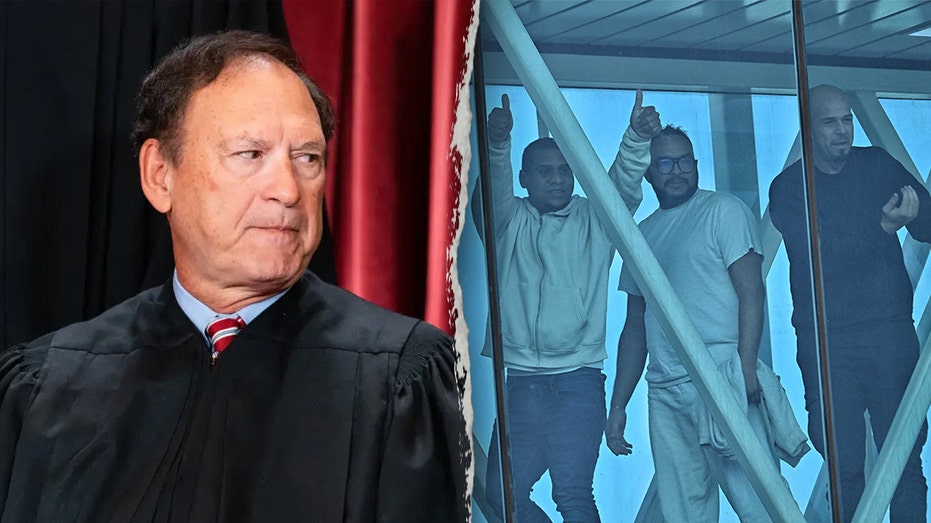

If you want to make a movie about Jesus, the Bible is a great place to start — and end.
So it was an odd choice for Mofac Studios, a South Korean production company, to use Charles Dickens’ work “The Life of Our Lord” as the basis for its new animated children’s movie, “The King of Kings.”
Emotional moment aborted, unless you count the emotion of annoyance, which I experienced in abundance.
Dickens appears to have had a great deal of respect for Jesus because “The Life of Our Lord” is a work he wrote for his children to understand Jesus’ life. He never intended for the book to be shared outside his own family.
Nevertheless, this is the route the filmmakers decided to take with this retelling of scenes from Jesus’ life — through the eyes of Charles Dickens. Or rather, through the eyes of one of his young sons, Walter. And this route ends up being a confusing journey, especially for the audience of children the film targets.
An ode to gentle parenting
I first must address the movie's opening scene, which is jarringly not Dickensian, but seems to have been conceived by a gentle-parenting influencer.
Here is how it unfolds: Charles Dickens is giving a dramatic reading of his work “A Christmas Carol” at a packed theater. Backstage, his wife and three young children (he actually had 10 kids, but who’s counting?) are noisily wreaking havoc as son Walter and his pet cat playact scenes from "King Arthur," who is Walter’s hero.
The mayhem interrupts father’s performance so much that he has to ask the audience to wait while he goes behind the curtain. Walter is portrayed as a cherubic-looking but straight-up disrespectful and petulant brat. Somehow, Dad not appreciating his child wrecking his performance makes him the bad guy, as mom pleads for his understanding (um, why wasn’t she keeping them quiet, for heaven’s sake?). Even the cat is shown to be ticked at dad.
This whole interaction takes too long, considering that hundreds of people who paid to attend are just waiting on the other side of the curtain. I thought maybe the filmmakers forgot they left them out there. Eventually Walter pouts and says he’s going home. His parents are dismayed at this. Go figure.
I’m always a little uncomfortable with depictions for children that normalize or even elevate selfish, bratty behavior. So in a movie theater full of children, I was uncomfortable with this opening — and it was not the only discomfort I was about to experience.
The odd filmmaking choices just keep coming
That scene sets the stage for the rest of the film, in which (back at home that night) Charles Dickens narrates his entire manuscript for “The Life of Our Lord” to Walter by way of proving to him that there is a king even more impressive than "King Arthur."
Many familiar Bible scenes come to life as the tale unfolds, and I expected a kind of "Princess Bride" experience, where the action would return to the narrator telling the story to a child. Instead, the child and the narrator (Walter, his dad, and the cat) are transported into Bible scenes.
Sitting in the movie theater full of children, I couldn’t help but think how confusing these Bible stories would seem when the Dickens family is suddenly a part of each one — not only witnessing action but also interacting with it.
One of the most egregious examples is when Walter and his cat are following Jesus into Jerusalem on Palm Sunday. Walter loses his cat, which his dad finds (also in the scene), but then Jesus is holding the cat while looking lovingly at Walter. Weirdly, Jesus then turns into Walter’s dad again. Good grief.
The kid also follows Jesus to the cross, attempting to take him a container of water, but he trips and the container rolls toward Jesus, who looks at it while he’s collapsed under the cross, exhausted. This mixture of sacred and silly is hard to stomach.
My personal opposite-of-favorite, however, was the scene where Peter hears the cock crow at dawn and sinks to his knees, realizing the weight of what he has done. The animation in that scene is beautiful, and I felt tears coming — that scripture always gets me — but then the kid and his cat walk into the scene to comfort Peter.
Emotional moment aborted — unless you count the emotion of annoyance, which I experienced in abundance.
But how did they do with the Bible stories?
Other than a couple of figures (with a cat) from the 1800s repeatedly showing up in first-century Israel, the Bible stories are mostly accurate. Mostly.
For example, though it is commonly believed, the film perpetuates the myth of “no room at the inn."
Jesus’ words are subtly changed a few times, and not for the better. When at age 12 his parents find him in the temple, the Bible says he told them, “Did you not know I had to be in my Father’s house?” But in the movie, he tells them he feels like he needs to be there.
That’s not the only time Jesus seems to be using present-day language. When he tells the people who want to stone the adulterous woman that they can do so if they’ve never sinned and they start backing away, he seems to taunt them with a “that’s what I thought” comment.
There is also language that doesn’t seem to acknowledge that Jesus was always God, including a remark about how he was able to do something because “his faith was so strong,” as if he was just a man with extraordinary faith — instead of God himself.
How the film looks
Some of the big panoramic scene shots are beautiful, cinematic, and richly detailed. However, the animation is hit-and-miss because many of the Bible characters look cartoonishly grotesque — and not just the bad guys. Peter and John are pretty ugly; Jesus, though, is much better looking.
I appreciated that in deference to its target audience, the filmmakers managed to depict the cruelty to Jesus with considerable discretion.
For instance, his flogging is shown, but he is not shown receiving it. The crucifixion is hard to watch, although not gory. But the crucifixion should be hard to watch.
How it all ends
Strangely, the resurrection gets short shrift here. The empty tomb is shown and the fact that Jesus is alive is made very clear, but it’s almost glossed over.
Back at home, Walter is so excited about his new favorite king that he wakes up his brother and sister in the middle of the night to tell them the story. Then the credits roll with an awful song by Kristin Chenoweth that includes lyrics about how if you just believe, anything can happen.
Not the “just believe” message again! This wasn’t a "Grinch" movie, for heaven’s sake. Ugh.
After the credits, there’s a “special message” in which a group of kids who’ve seen the movie talk about how great it is and how you can pay for more kids to see it by using a QR code.
Should I have used that QR code?
No. I wouldn’t recommend this as a good use of money or time for your kids.
However, if your kids are at least later-elementary age and already conversant with the Bible’s depiction of Jesus, and you are willing to take them out after the movie to talk about it with the goal of building up their discernment skills, then "The King of Kings" is a great parenting opportunity.
Editor's note: "The King of Kings" and distributor Angel Studios are sponsors of BlazeTV. The independent views of the author do not necessarily represent the views of Blaze Media.
.png)
 3 days ago
9
3 days ago
9














 English (US)
English (US)